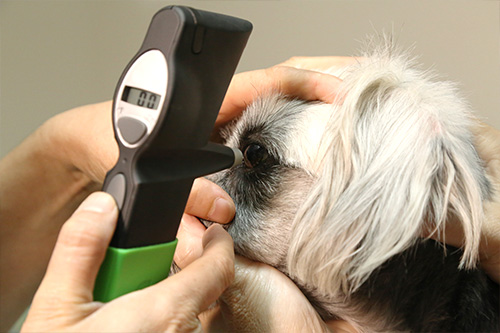
Many diseases can affect your pet’s eyes, altering vision and causing increased redness, squinting or irritation. The eyes themselves may be directly damaged by trauma, excessive dryness or infection. Even genetic disorders can lead to eye problems.
There are different tests we may perform to help diagnose the cause of your pet’s eye issues. To start, an exam with an ophthalmoscope helps to visualize the structures of the eyes including the lids, iris, cornea, and the pupil’s response to light. Another test used is the fluorescein dye test (FDT), which temporarily stains areas of damaged cornea when looking for a corneal ulcer. It also can help determine if tears are draining properly from the eyes. The Schirmer tear test (STT) assesses the amount of tears produced in eyes and can help to diagnose conditions like “dry eye”. Lastly, a tonometer measures the intraocular pressure of the eye to help diagnose conditions like glaucoma.
Many eye conditions can be emergencies and can lead to permanent vision loss and can be very painful. Call us right away if you notice any of the following problems in either or both of your pet’s eyes: dilated (enlarged) pupils, clouding of the cornea (the normally clear outer layer of the eye), red or bloodshot eyes, one eye protruding or appearing larger than the other, squinting, tearing or rubbing/pawing at the eyes or rubbing his or her head against the floor or furniture more than normal as this can indicate discomfort with the eyes.
